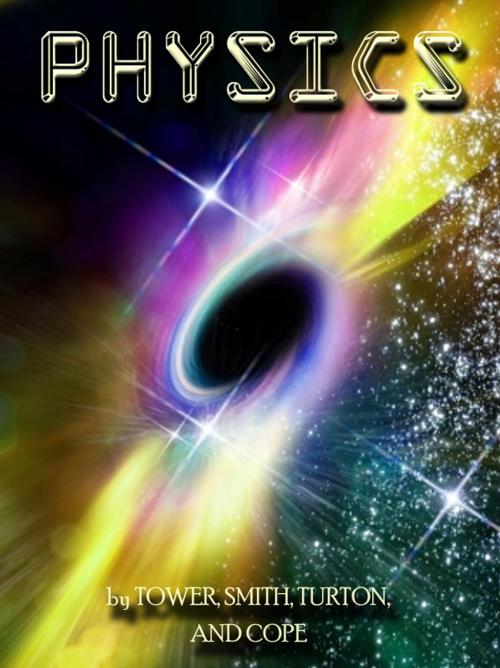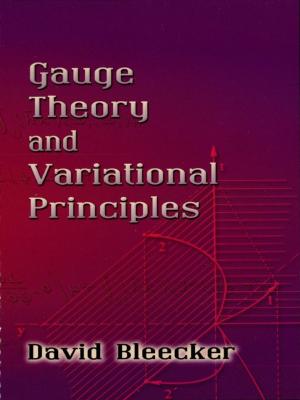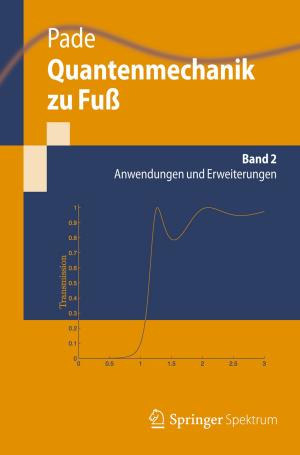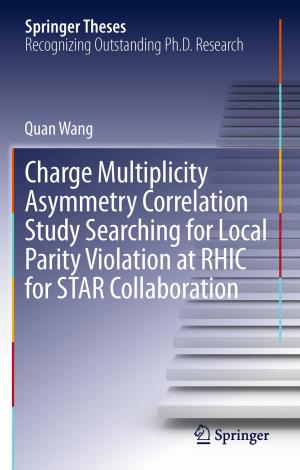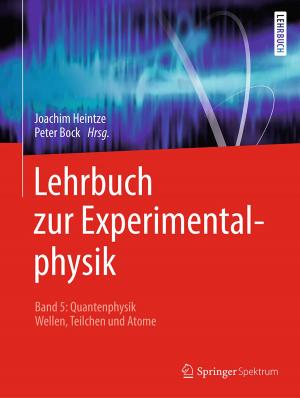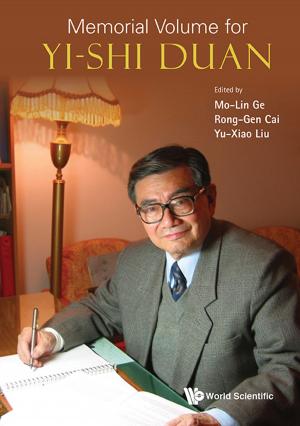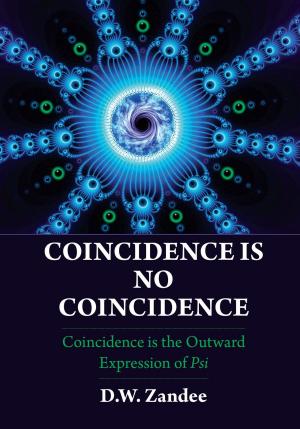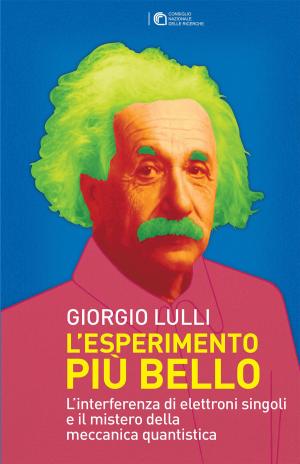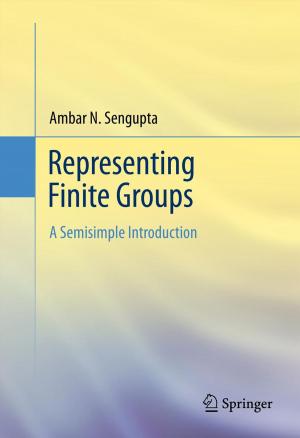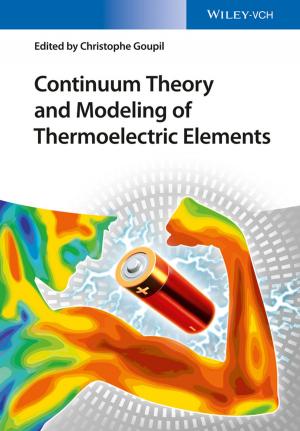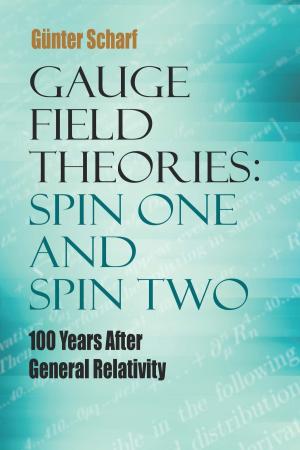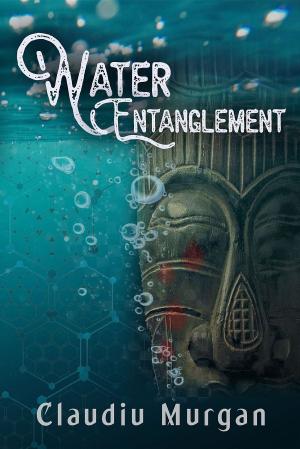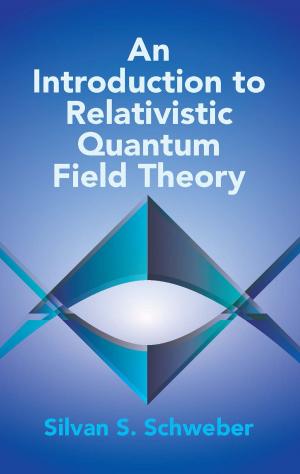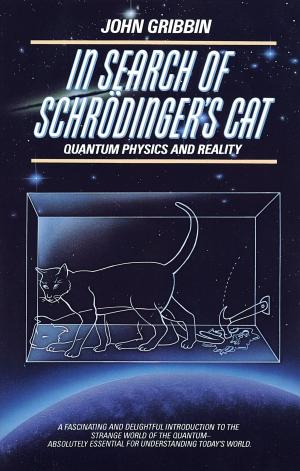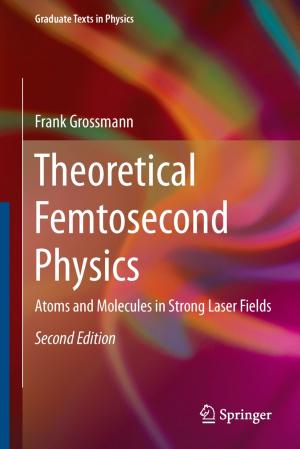Physics (Illustrated) - The Classic, Definitive Guide - A must read for all of those interested in the Mother of all Science from the Beginner to the Advanced Student.
Nonfiction, Science & Nature, Science, Physics, Mathematical Physics, Waves & Wave Mechanics, Quantum Theory| Author: | CHARLES SMITH, WILLIS TOWER, THOMAS COPE | ISBN: | 1230000004698 |
| Publisher: | THOMAS COPE | Publication: | July 20, 2012 |
| Imprint: | Language: | English |
| Author: | CHARLES SMITH, WILLIS TOWER, THOMAS COPE |
| ISBN: | 1230000004698 |
| Publisher: | THOMAS COPE |
| Publication: | July 20, 2012 |
| Imprint: | |
| Language: | English |
ON THE STUDY OF PHYSICS
When a pupil begins the study of Physics he has in his possession many bits of knowledge which are fundamental in the science. He has learned to throw a ball and can tell how a thrown ball moves. He has drawn out nails with a claw hammer. He has seen wood float and iron sink. He has sucked liquids up through straws. In his mother's kitchen, he sees water as ice, liquid, and steam. On a wintry day he reads the temperature on a thermometer. He sees sparks fly from car wheels when the brakes are applied. He has played with a horseshoe magnet, and has found the north by means of a compass. The telephone, the electric light and the motor he sees, and perhaps uses, many times a day. He dresses before a mirror, focuses his camera, watches the images at a moving picture show, and admires the colors of the rainbow. He has cast stones into water to watch the ripples spread, has shouted to hear the echo, and perhaps plays some musical instrument. These, and a thousand other things, are known to the intelligent and normal boy or girl who has reached the age at which the study of Physics is properly begun.
To a great extent even the terms used in the science are familiar to the beginner. He speaks of the horse-power of an engine, reads kilowatt-hours from the meter in the cellar, and may know that illuminating gas costs one dollar per thousand "cubic feet." "Ampere" and "volt" are words he frequently hears and sees.
When he takes up the study of Physics, the attitude of the student toward these familiar things and words must undergo a change. Casual information about them must be changed to sound knowledge, purposely acquired. Hazy notions about the meanings of words must be replaced by exact definitions. Bits of knowledge must be built into a structure in which each fact finds its proper place in relation to the others.
The student of Physics must never forget that he is studying not pages of text but the behavior and properties of iron, water, mica, moving balls, pumps, boiling liquids, compressed air, mirrors, steam engines, magnets, dynamos, violins, flutes, and a host of other things. His studies should, whenever possible, be made first hand upon the things themselves. The text is an aid to study, never a substitute for the thing studied.
The student of Physics must never forget that he is studying not pages of text but the behavior and properties of iron, water, mica, moving balls, pumps, boiling liquids, compressed air, mirrors, steam engines, magnets, dynamos, violins, flutes, and a host of other things. His studies should, whenever possible, be made first hand upon the things themselves. The text is an aid to study, never a substitute for the thing studied.
The student who takes up the study of Physics in the way suggested will find himself at the end of a year of study in possession of much new and valuable knowledge about the physical world in which he lives. By virtue of this knowledge he will be better able to enjoy the world, to control it, and to use it.
Thomas D. Cope.
________________________________________
CONTENTS
Chapter I. Introduction And Measurement. Page
Chapter II. Molecular Forces And Motions.
Chapter III. Mechanics Or Liquids.
Chapter IV. Mechanics Of Gases.
Chapter V. Force And Motion.
Chapter VI. Work And Energy.
Chapter VII. Heat, Its Production And Transmission.
Chapter VIII. Heat And Work.
Chapter IX. Magnetism.
Chapter X. Static Electricity.
Chapter XI. Electric Currents Produced By Voltaic Cells.
Chapter XII. Magnetic Effects Of Electric Currents, And Electrical
Measurements.
Chapter XIII. Chemical And Heat Effects Of Electric Currents.
Chapter XIV. Induced Currents.
Chapter XV. Sound.
Chapter XVI. Light.
Chapter XVII. Invisible Radiations
Chapter XVIII. Wireless Telephony And Alternating Currents.
When a pupil begins the study of Physics he has in his possession many bits of knowledge which are fundamental in the science. He has learned to throw a ball and can tell how a thrown ball moves. He has drawn out nails with a claw hammer. He has seen wood float and iron sink. He has sucked liquids up through straws. In his mother's kitchen, he sees water as ice, liquid, and steam. On a wintry day he reads the temperature on a thermometer. He sees sparks fly from car wheels when the brakes are applied. He has played with a horseshoe magnet, and has found the north by means of a compass. The telephone, the electric light and the motor he sees, and perhaps uses, many times a day. He dresses before a mirror, focuses his camera, watches the images at a moving picture show, and admires the colors of the rainbow. He has cast stones into water to watch the ripples spread, has shouted to hear the echo, and perhaps plays some musical instrument. These, and a thousand other things, are known to the intelligent and normal boy or girl who has reached the age at which the study of Physics is properly begun.
To a great extent even the terms used in the science are familiar to the beginner. He speaks of the horse-power of an engine, reads kilowatt-hours from the meter in the cellar, and may know that illuminating gas costs one dollar per thousand "cubic feet." "Ampere" and "volt" are words he frequently hears and sees.
When he takes up the study of Physics, the attitude of the student toward these familiar things and words must undergo a change. Casual information about them must be changed to sound knowledge, purposely acquired. Hazy notions about the meanings of words must be replaced by exact definitions. Bits of knowledge must be built into a structure in which each fact finds its proper place in relation to the others.
The student of Physics must never forget that he is studying not pages of text but the behavior and properties of iron, water, mica, moving balls, pumps, boiling liquids, compressed air, mirrors, steam engines, magnets, dynamos, violins, flutes, and a host of other things. His studies should, whenever possible, be made first hand upon the things themselves. The text is an aid to study, never a substitute for the thing studied.
The student of Physics must never forget that he is studying not pages of text but the behavior and properties of iron, water, mica, moving balls, pumps, boiling liquids, compressed air, mirrors, steam engines, magnets, dynamos, violins, flutes, and a host of other things. His studies should, whenever possible, be made first hand upon the things themselves. The text is an aid to study, never a substitute for the thing studied.
The student who takes up the study of Physics in the way suggested will find himself at the end of a year of study in possession of much new and valuable knowledge about the physical world in which he lives. By virtue of this knowledge he will be better able to enjoy the world, to control it, and to use it.
Thomas D. Cope.
________________________________________
CONTENTS
Chapter I. Introduction And Measurement. Page
Chapter II. Molecular Forces And Motions.
Chapter III. Mechanics Or Liquids.
Chapter IV. Mechanics Of Gases.
Chapter V. Force And Motion.
Chapter VI. Work And Energy.
Chapter VII. Heat, Its Production And Transmission.
Chapter VIII. Heat And Work.
Chapter IX. Magnetism.
Chapter X. Static Electricity.
Chapter XI. Electric Currents Produced By Voltaic Cells.
Chapter XII. Magnetic Effects Of Electric Currents, And Electrical
Measurements.
Chapter XIII. Chemical And Heat Effects Of Electric Currents.
Chapter XIV. Induced Currents.
Chapter XV. Sound.
Chapter XVI. Light.
Chapter XVII. Invisible Radiations
Chapter XVIII. Wireless Telephony And Alternating Currents.
ON THE STUDY OF PHYSICS
When a pupil begins the study of Physics he has in his possession many bits of knowledge which are fundamental in the science. He has learned to throw a ball and can tell how a thrown ball moves. He has drawn out nails with a claw hammer. He has seen wood float and iron sink. He has sucked liquids up through straws. In his mother's kitchen, he sees water as ice, liquid, and steam. On a wintry day he reads the temperature on a thermometer. He sees sparks fly from car wheels when the brakes are applied. He has played with a horseshoe magnet, and has found the north by means of a compass. The telephone, the electric light and the motor he sees, and perhaps uses, many times a day. He dresses before a mirror, focuses his camera, watches the images at a moving picture show, and admires the colors of the rainbow. He has cast stones into water to watch the ripples spread, has shouted to hear the echo, and perhaps plays some musical instrument. These, and a thousand other things, are known to the intelligent and normal boy or girl who has reached the age at which the study of Physics is properly begun.
To a great extent even the terms used in the science are familiar to the beginner. He speaks of the horse-power of an engine, reads kilowatt-hours from the meter in the cellar, and may know that illuminating gas costs one dollar per thousand "cubic feet." "Ampere" and "volt" are words he frequently hears and sees.
When he takes up the study of Physics, the attitude of the student toward these familiar things and words must undergo a change. Casual information about them must be changed to sound knowledge, purposely acquired. Hazy notions about the meanings of words must be replaced by exact definitions. Bits of knowledge must be built into a structure in which each fact finds its proper place in relation to the others.
The student of Physics must never forget that he is studying not pages of text but the behavior and properties of iron, water, mica, moving balls, pumps, boiling liquids, compressed air, mirrors, steam engines, magnets, dynamos, violins, flutes, and a host of other things. His studies should, whenever possible, be made first hand upon the things themselves. The text is an aid to study, never a substitute for the thing studied.
The student of Physics must never forget that he is studying not pages of text but the behavior and properties of iron, water, mica, moving balls, pumps, boiling liquids, compressed air, mirrors, steam engines, magnets, dynamos, violins, flutes, and a host of other things. His studies should, whenever possible, be made first hand upon the things themselves. The text is an aid to study, never a substitute for the thing studied.
The student who takes up the study of Physics in the way suggested will find himself at the end of a year of study in possession of much new and valuable knowledge about the physical world in which he lives. By virtue of this knowledge he will be better able to enjoy the world, to control it, and to use it.
Thomas D. Cope.
________________________________________
CONTENTS
Chapter I. Introduction And Measurement. Page
Chapter II. Molecular Forces And Motions.
Chapter III. Mechanics Or Liquids.
Chapter IV. Mechanics Of Gases.
Chapter V. Force And Motion.
Chapter VI. Work And Energy.
Chapter VII. Heat, Its Production And Transmission.
Chapter VIII. Heat And Work.
Chapter IX. Magnetism.
Chapter X. Static Electricity.
Chapter XI. Electric Currents Produced By Voltaic Cells.
Chapter XII. Magnetic Effects Of Electric Currents, And Electrical
Measurements.
Chapter XIII. Chemical And Heat Effects Of Electric Currents.
Chapter XIV. Induced Currents.
Chapter XV. Sound.
Chapter XVI. Light.
Chapter XVII. Invisible Radiations
Chapter XVIII. Wireless Telephony And Alternating Currents.
When a pupil begins the study of Physics he has in his possession many bits of knowledge which are fundamental in the science. He has learned to throw a ball and can tell how a thrown ball moves. He has drawn out nails with a claw hammer. He has seen wood float and iron sink. He has sucked liquids up through straws. In his mother's kitchen, he sees water as ice, liquid, and steam. On a wintry day he reads the temperature on a thermometer. He sees sparks fly from car wheels when the brakes are applied. He has played with a horseshoe magnet, and has found the north by means of a compass. The telephone, the electric light and the motor he sees, and perhaps uses, many times a day. He dresses before a mirror, focuses his camera, watches the images at a moving picture show, and admires the colors of the rainbow. He has cast stones into water to watch the ripples spread, has shouted to hear the echo, and perhaps plays some musical instrument. These, and a thousand other things, are known to the intelligent and normal boy or girl who has reached the age at which the study of Physics is properly begun.
To a great extent even the terms used in the science are familiar to the beginner. He speaks of the horse-power of an engine, reads kilowatt-hours from the meter in the cellar, and may know that illuminating gas costs one dollar per thousand "cubic feet." "Ampere" and "volt" are words he frequently hears and sees.
When he takes up the study of Physics, the attitude of the student toward these familiar things and words must undergo a change. Casual information about them must be changed to sound knowledge, purposely acquired. Hazy notions about the meanings of words must be replaced by exact definitions. Bits of knowledge must be built into a structure in which each fact finds its proper place in relation to the others.
The student of Physics must never forget that he is studying not pages of text but the behavior and properties of iron, water, mica, moving balls, pumps, boiling liquids, compressed air, mirrors, steam engines, magnets, dynamos, violins, flutes, and a host of other things. His studies should, whenever possible, be made first hand upon the things themselves. The text is an aid to study, never a substitute for the thing studied.
The student of Physics must never forget that he is studying not pages of text but the behavior and properties of iron, water, mica, moving balls, pumps, boiling liquids, compressed air, mirrors, steam engines, magnets, dynamos, violins, flutes, and a host of other things. His studies should, whenever possible, be made first hand upon the things themselves. The text is an aid to study, never a substitute for the thing studied.
The student who takes up the study of Physics in the way suggested will find himself at the end of a year of study in possession of much new and valuable knowledge about the physical world in which he lives. By virtue of this knowledge he will be better able to enjoy the world, to control it, and to use it.
Thomas D. Cope.
________________________________________
CONTENTS
Chapter I. Introduction And Measurement. Page
Chapter II. Molecular Forces And Motions.
Chapter III. Mechanics Or Liquids.
Chapter IV. Mechanics Of Gases.
Chapter V. Force And Motion.
Chapter VI. Work And Energy.
Chapter VII. Heat, Its Production And Transmission.
Chapter VIII. Heat And Work.
Chapter IX. Magnetism.
Chapter X. Static Electricity.
Chapter XI. Electric Currents Produced By Voltaic Cells.
Chapter XII. Magnetic Effects Of Electric Currents, And Electrical
Measurements.
Chapter XIII. Chemical And Heat Effects Of Electric Currents.
Chapter XIV. Induced Currents.
Chapter XV. Sound.
Chapter XVI. Light.
Chapter XVII. Invisible Radiations
Chapter XVIII. Wireless Telephony And Alternating Currents.
